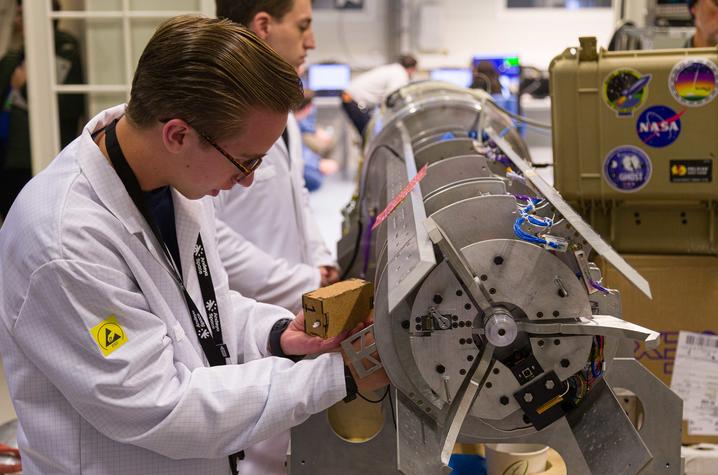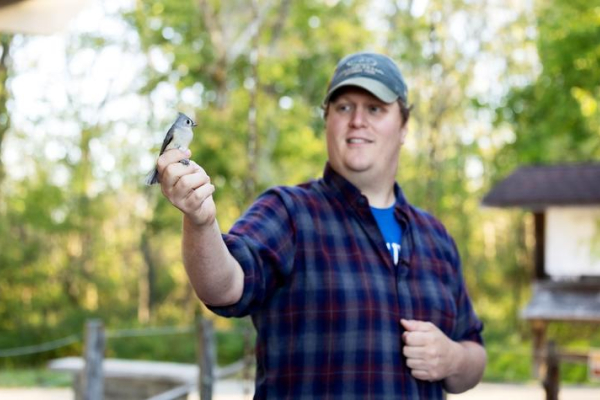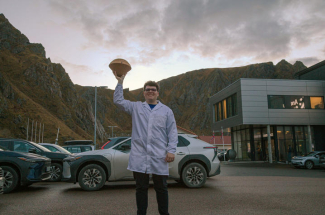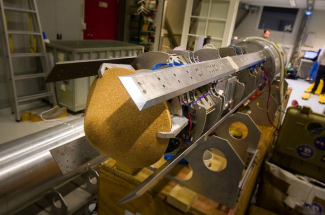Kentucky dream takes flight: UK joins NASA on Arctic space mission

A team of students and faculty from the University of Kentucky Stanley and Karen Pigman College of Engineering will make history in Norway, launching a UK-developed payload as part of NASA’s GHOST spaceflight mission.
The team’s payload — known as the Kentucky Re-entry Universal Payload System (KRUPS) — is scheduled to launch today from Andøya Spaceport in Andenes, Norway, with NASA’s RockSat GHOST student mission. The project is believed to mark Kentucky’s first spaceflight from outside the United States and its first launch north of the Arctic Circle.
Watch a livestream of the launch on Andøya Space’s YouTube channel.
The GHOST mission will launch from Norway instead of NASA’s Wallops Flight Facility in Virginia — NASA’s only owned and operated launch range. Launching from Andøya Spaceport will allow the rocket to reach a higher altitude, giving the UK payload the opportunity to experience hypersonic re-entry and collect data that could improve future spacecraft heat shields.
The University of Kentucky’s contribution to the flight campaign, known as KANG (KRUPS Aboard Norweigian GHOST), brings together more than 20 undergraduate and graduate students guided by faculty leads Alexandre Martin, Ph.D., and Savio Poovathingal, Ph.D., from the Department of Aerospace and Mechanical Engineering, along with Aaron Cramer, Ph.D., and James Lumpp, Ph.D., from the Department of Electrical and Computer Engineering.
“The KANG mission is a unique opportunity for students to learn by doing real space research, gaining firsthand experience in the design, testing, operation and data collection of actual hypersonic flight hardware,” Martin said. “It allows them to apply classroom knowledge to a real mission and push our understanding of atmospheric entry and thermal protection system materials.”
Eric Adams, a master’s student in the Department of Mechanical and Aerospace Engineering, is serving as lead mechanical and safety engineer for the project — a role that comes with immense responsibility.
“The 32-foot sounding rocket that our payload travels on reaches an altitude of more than 150 miles, and if something unexpected happens, it can derail the entire mission,” Adams said. “We’ve done lots of component testing, including vibration testing, to make sure it will withstand the extreme G-forces during launch.”
For Adams, the mission represents both the culmination of years of study and a lifelong dream realized.
“It is incredible, and quite frankly, achieving a dream,” he said. “Not very many people can say that they worked with NASA and sent something into space. A lot of hard work went into this project, and it’s wonderful both integrating the rocket alongside NASA and getting to travel to Norway for the launch.”
A Lawrenceburg, Kentucky, native, Adams earned his bachelor’s degree in mechanical engineering from UK in 2023, where he was also part of the Lewis Honors College. His connection to UK engineering began early — from visiting campus for LEGO robotics competitions to attending E-Day throughout his childhood.
“There has always been such a connection to UK that it was an obvious choice when it came time to choose a school,” he said. “Especially for my master’s, where I attended UK specifically because of the opportunity to work on the KRUPS program.”
Adams credits UK’s programs — including Lewis Honors College’s Scholars in Engineering and Management (SEAM) Pathway, which focuses on systems engineering and leadership — with giving him the skills and confidence to lead a team of undergraduate students on the GHOST project.
“It’s one thing being able to recall equations for an exam, but being able to intuitively apply that knowledge is what makes a good engineer,” he said. “There are so many useful tools and skills to be learned by applying yourself on a real engineering problem.”
Learn more about NASA’s GHOST student rocket launch at https://andoyaspace.no/what-we-do/student-opportunities/university-projects/the-ghost-mission/.
The NASA GHOST mission is supported by NASA, the Kentucky Space Grant Consortium, the Kentucky Statewide EPSCoR Committee, the Kentucky Cabinet for Economic Development and the UK Office of the Vice President for Research, which provided internal funds.
The material is based upon work supported by NASA cooperative agreement No(s) 80NSSC20M0047 and 80NSSC23M0212. Any opinions, findings, and conclusions or recommendations expressed in this material are those of the author(s) and do not necessarily reflect the views of the National Aeronautics and Space Administration.




